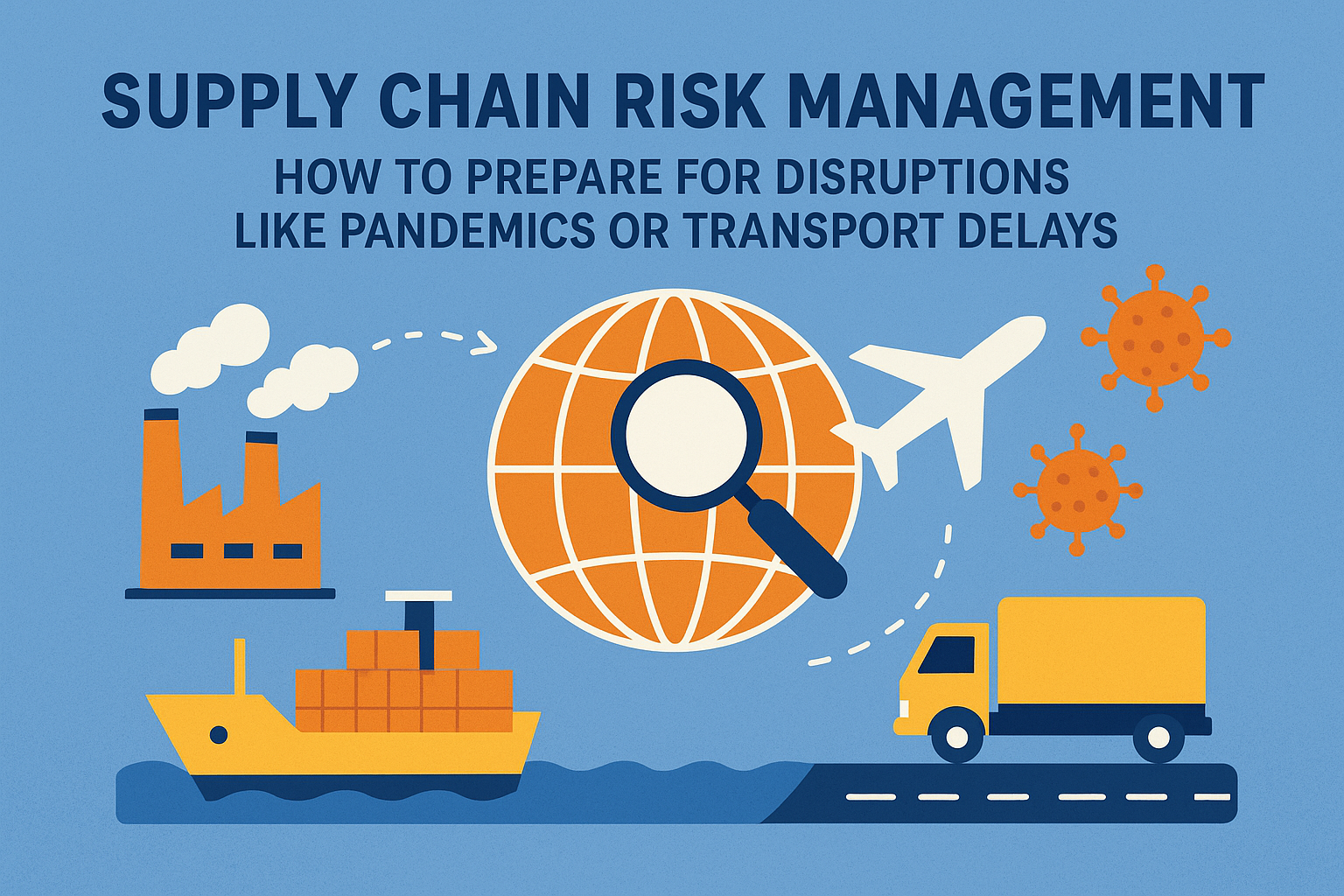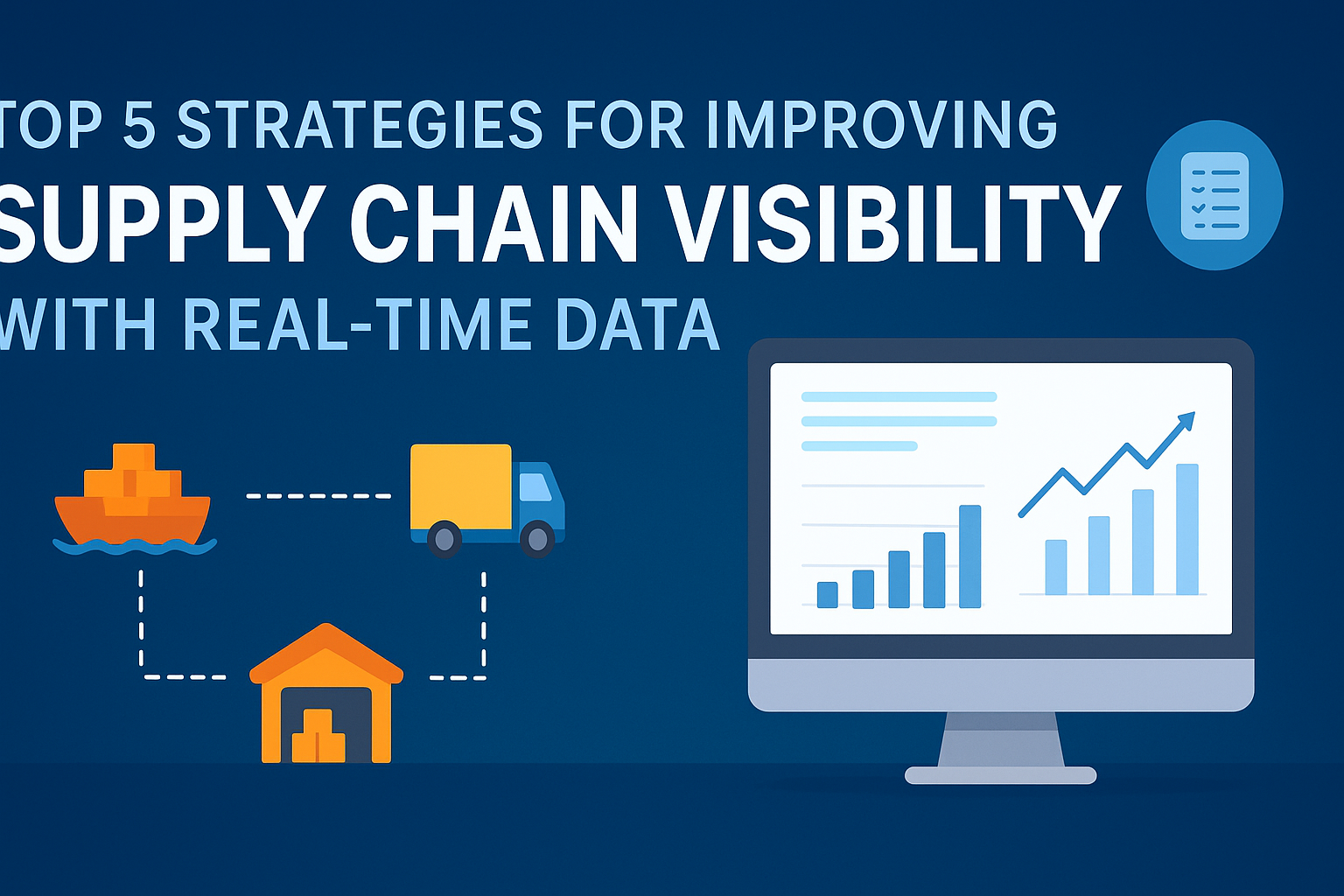In today’s interconnected world, supply chains are more complex than ever — and more vulnerable. The COVID-19 pandemic, global shipping crises, and geopolitical tensions have shown how quickly disruptions can halt operations and impact business performance. Companies that were once focused solely on efficiency are now prioritizing resilience and risk management.
In this blog, we’ll explore how businesses can prepare for unexpected disruptions like pandemics, transport delays, or supplier shutdowns and keep operations running smoothly.
1. Conduct a Comprehensive Risk Assessment
The first step to building a resilient supply chain is understanding where your risks lie. Identify and categorize potential threats, such as:
- Natural Disasters: Floods, hurricanes, earthquakes.
- Pandemics & Health Crises: Workforce shortages, factory shutdowns.
- Transportation Issues: Port congestion, fuel shortages, shipping container crises.
- Geopolitical Risks: Trade wars, sanctions, regulatory changes.
Use risk mapping tools and regularly update your assessments to reflect current global events. This helps prioritize which risks need immediate mitigation strategies.
2. Diversify Suppliers & Logistics Partners
Relying on a single supplier or shipping route creates a single point of failure. To reduce risk:
- Source from multiple regions to avoid being impacted by one country’s lockdown or port closure.
- Develop backup transport options (air freight, rail, trucking) to pivot quickly when delays occur.
- Build strategic partnerships with secondary suppliers and carriers to ensure capacity during emergencies.
3. Increase Visibility with Real-Time Data
You can’t manage what you can’t see. Use real-time tracking systems and supply chain analytics to:
- Monitor inventory levels across all locations.
- Get instant alerts about shipment delays or supplier disruptions.
- Improve demand forecasting to avoid overstocking or stockouts.
Technologies like IoT sensors, AI-driven analytics, and cloud-based control towers give businesses the ability to act before small issues become major crises.
4. Build Strategic Safety Stock & Buffer Capacity
Just-in-time inventory strategies can save money but also leave you exposed. To build resilience:
- Maintain critical inventory buffers for high-demand items.
- Secure alternate production sites or manufacturing partners in case one facility shuts down.
- Balance efficiency with resilience by using scenario planning to determine optimal stock levels.
5. Develop a Crisis Response Plan
Even the best-prepared supply chains face disruptions. A documented, regularly tested business continuity plan (BCP) ensures faster recovery. Your plan should include:
- Clear communication protocols for employees, partners, and customers.
- Roles and responsibilities during emergencies.
- Recovery timelines for critical operations.
- Regular simulation exercises to test the plan’s effectiveness.
6. Leverage Collaboration & Strategic Partnerships
Collaborating with suppliers, logistics providers, and even competitors can strengthen resilience. By sharing data, forecasts, and resources, businesses can coordinate better and reduce overall risk exposure.
Final Thoughts
Supply chain risk management is no longer optional — it’s a competitive advantage. Companies that invest in risk assessment, diversification, real-time data, and crisis planning will weather disruptions more effectively than those relying on old models of efficiency.
Preparedness is not just about surviving the next pandemic or transport delay — it’s about building a supply chain that thrives in uncertainty.





